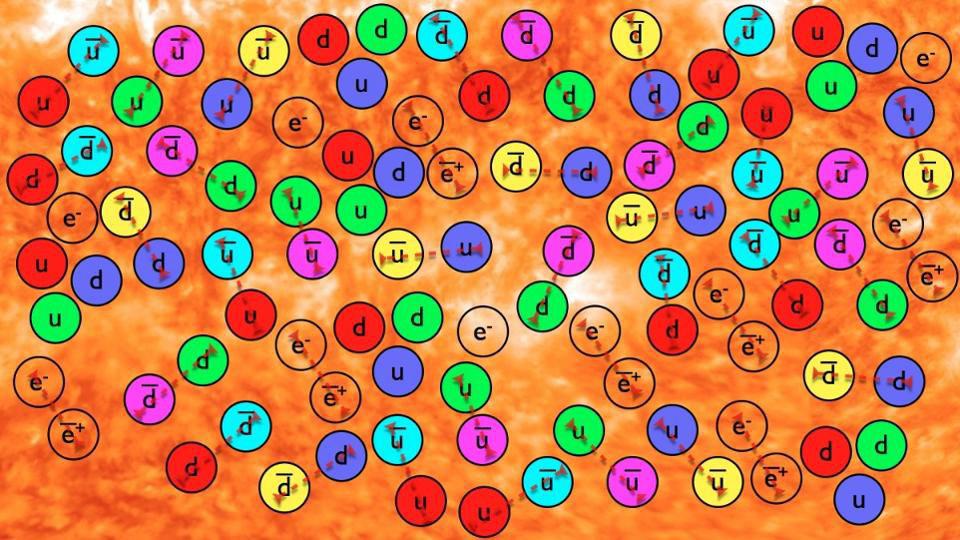MIT’s extremely precise new atomic clock can help detect dark matter

Credit: MIT
- Scientists from MIT create a new, extremely precise atomic clock that uses quantum entanglement.
- The researchers employed ytterbium atoms and lasers for their technique.
- The wide-ranging applications of the accuracy of these clocks can aid in the search for dark matter and new physics.
MIT scientists designed a new kind of atomic clock that is not only more precise, but can help detect dark matter and gravitational waves. The researchers hope that the clock, which uses atoms in a state of quantum entanglement, can lead to the discovery of new physics.
Atomic clocks are known as the most accurate in existence. They utilize lasers to keep tabs on the vibrations of oscillating atoms, which move with regular frequency like tiny synchronized pendulums swinging back and forth. Cesium atoms, most often used in atomic clocks, have come to define what we consider a second, which is the time it takes for 9,192, 631,770 cycles of the standard Cesium-133 transition.
Atomic clocks are so good that if they were running from the first moments of our universe, they’d only be off by around half a second today, as the MIT (Massachusetts Institute of Technology) press release explains. While such precision is already quite remarkable, scientists are making efforts to make these clocks even more accurate, banking that an improvement in sensitivity could lead to the detection of new particles and better understanding of the nature and effects of time.
To accomplish this feat, the new clock uses atoms in a state of quantum entanglement rather than ones that randomly oscillate. A somewhat counterintuitive concept, quantum entanglement describes the effect whereby entangled particles are connected in such a way that affecting one impacts the other, even if they are at great distances. In other words, measuring the properties of one particle influences the properties of the other particle.
This concept, breaking away from the laws of classical physics, helped the researchers measure atomic vibrations with much more exactitude. In fact, their new clock can get to the same level of precision four times faster than un-entangled clocks.
How Do Atomic Clocks Work?www.youtube.com
The study’s lead author Edwin Pedrozo-Peñafiel, an MIT postdoc, thinks their approach is very promising.
“Entanglement-enhanced optical atomic clocks will have the potential to reach a better precision in one second than current state-of-the-art optical clocks,” said Pedrozo-Peñafiel.
To create the new atomic clock, the scientists entangled about 350 atoms of ytterbium. It has the same oscillation frequency as visible light and vibrates 100,000 times more frequently in a second than cesium. Tracking these oscillations with more accuracy allowed the scientists to pinpoint ever-smaller periods of time, making the clock more precise.
Making the clock work required cooling a gas made of the atoms and capturing them in an optical cavity between two mirrors. A laser beam shot at the mirrors produced a ping-pong effect while hitting the atoms thousands of times. This, in turn, created quantum entanglement between the atoms, giving them similar properties.
The study’s co-author Chi Shu explained how this worked: “It’s like the light serves as a communication link between atoms,” Shu elaborated. “The first atom that sees this light will modify the light slightly, and that light also modifies the second atom, and the third atom, and through many cycles, the atoms collectively know each other and start behaving similarly.”
Once the entanglement was established, another laser was employed to measure the average frequency.
The researchers write that their work will result in many applications across science and technology, with greater advances in the accuracy of timekeeping and precision tests of the fundamental laws of physics, geodesy, and gravitational-wave detection.
Vladan Vuletic, the study’s other co-author, is bullish on the implications of their finding:
“As the universe ages, does the speed of light change? Does the charge of the electron change?” Vuletic asked. “That’s what you can probe with more precise atomic clocks.”
Check out the new study published in the journal Nature.





